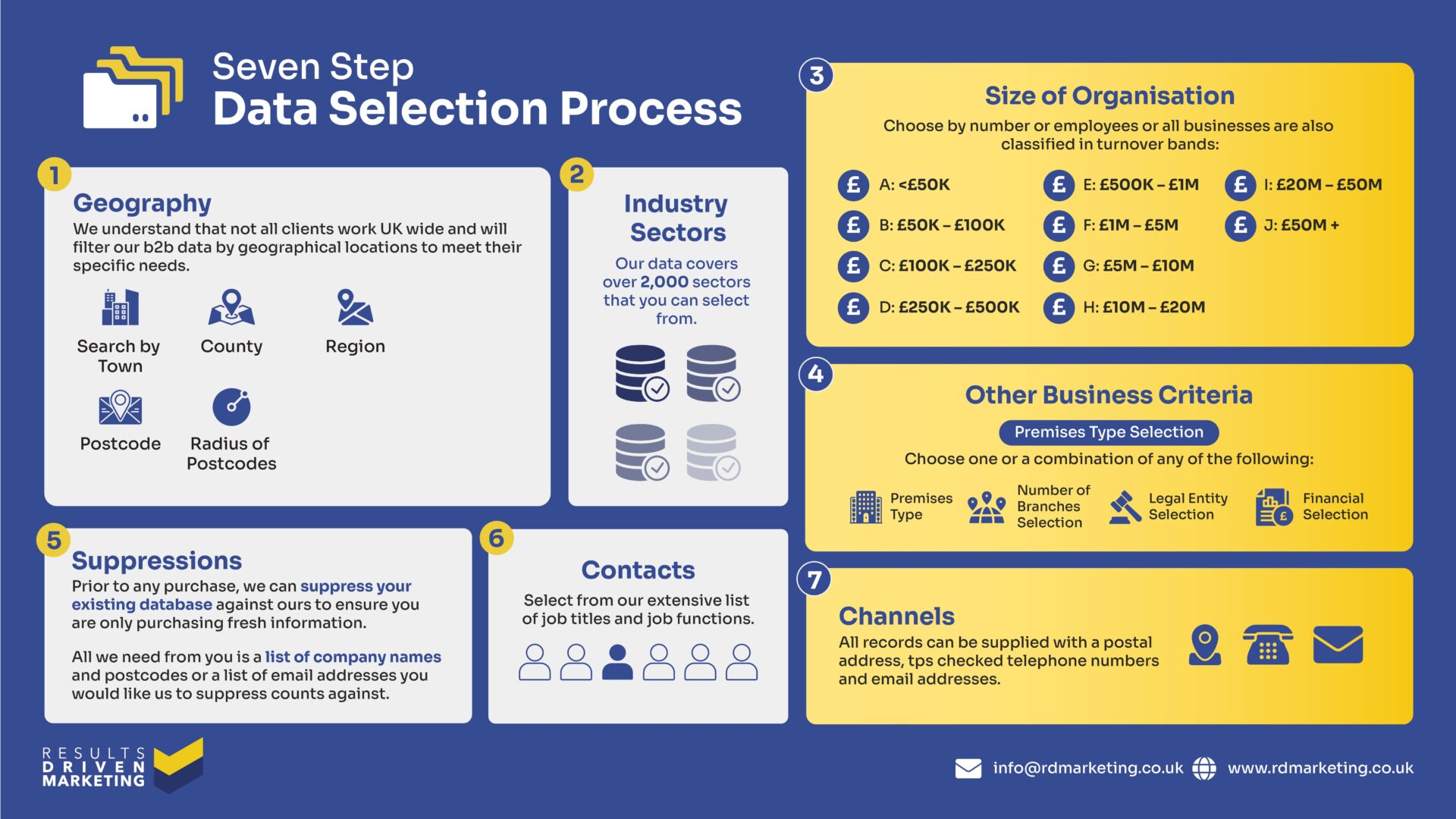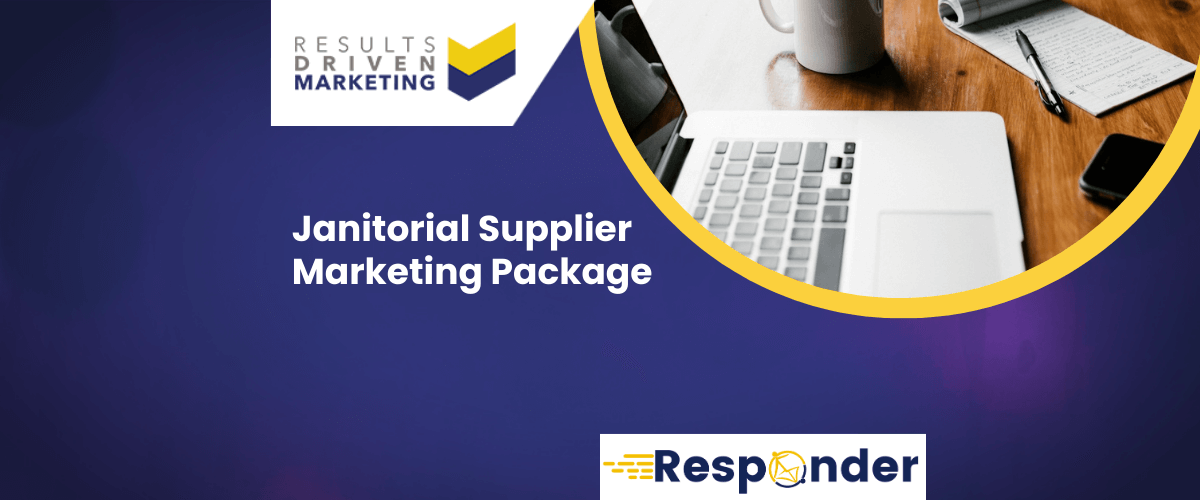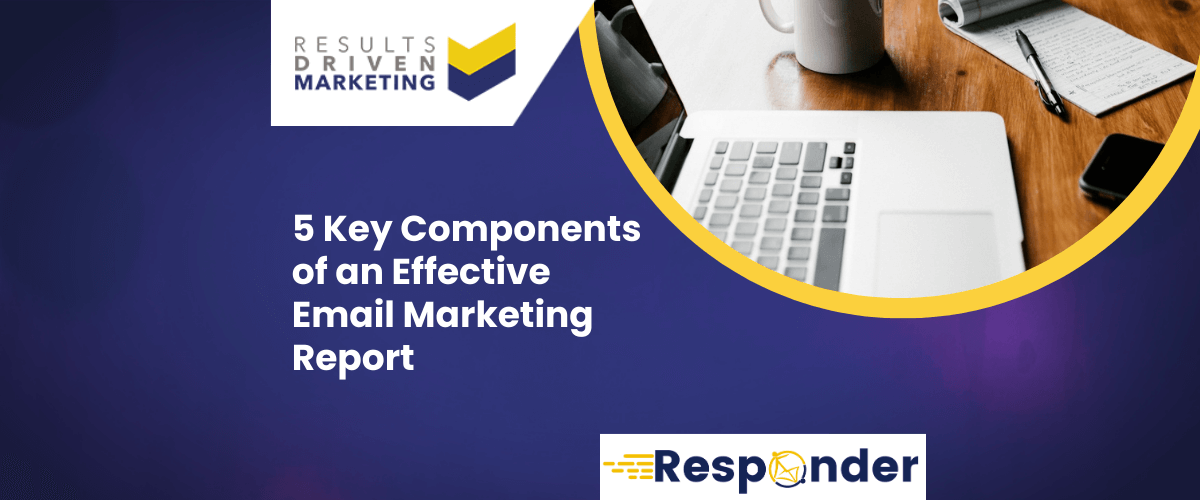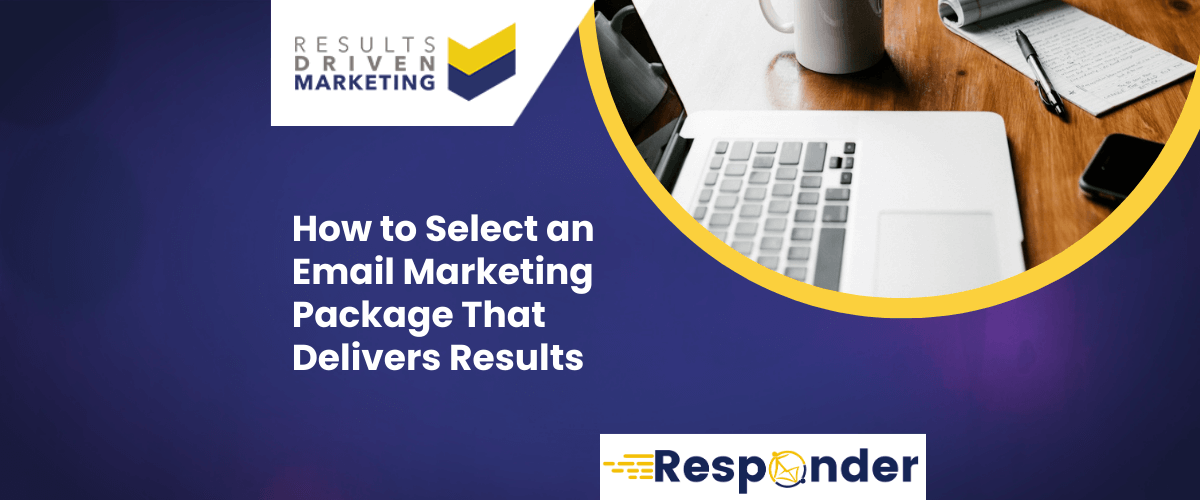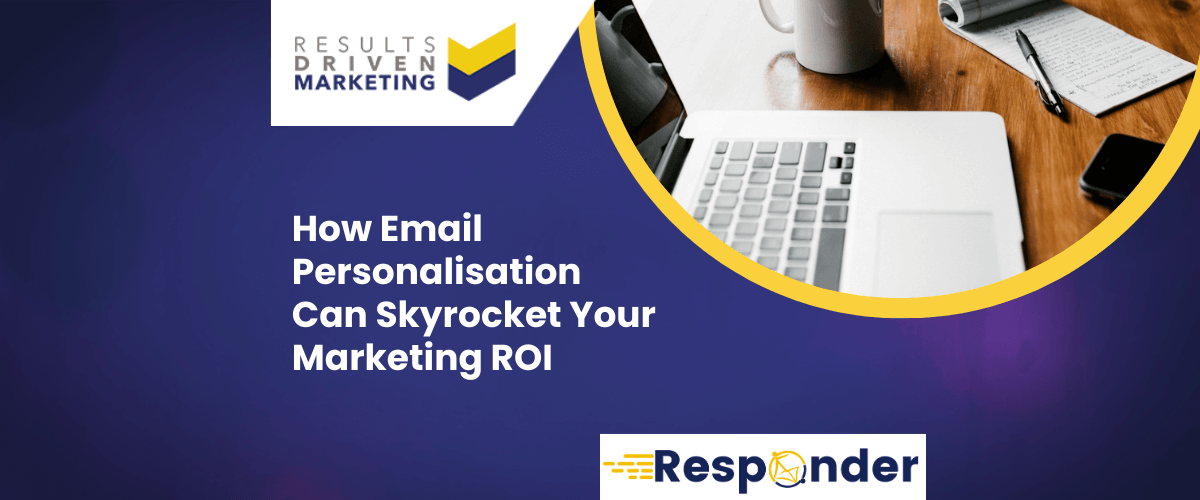
How Email Personalisation Can Skyrocket Your Marketing ROI
Email personalisation is truly a game-changer, elevating marketing strategies far beyond the basics. With inboxes overflowing daily, brands need more than flashy visuals or clever words—they need to feel relevant.
By sending content that’s thoughtfully tailored to each recipient, personalised email marketing turns campaigns from broad broadcasts into messages that genuinely connect.
The importance of personalisation in digital marketing can’t be overstated. People increasingly expect customised communication.
Gone are the days of one-size-fits-all messaging—modern audiences are more likely to engage with brands that make an effort to understand and address their unique needs.
And this targeted approach can make a tangible difference to marketing ROI. Brands leveraging personalised email campaigns see measurable increases in engagement rates, click-throughs, and conversions.
For businesses wanting to get serious about results, personalisation is a powerful way to maximise every email’s potential. From carefully crafted email address lists to data enrichment services, personalisation works best when backed by accurate, quality data.
That’s where RD Marketing steps in, offering B2B data, direct mail data, and consumer data, along with a variety of tools, like data cleansing and the CTPS checker, to ensure your campaigns reach the right audience, in the right way.
Table of contents:
The Importance of Email Personalisation
Email personalisation is all about crafting messages that feel tailored to each recipient, turning an ordinary email into a meaningful, targeted communication.
Instead of generic messages that treat every customer the same, personalised emails make each reader feel like the content was made just for them.
This unique approach does more than just catch attention; it directly impacts how engaged recipients are, and ultimately, how well these campaigns perform.
So, what exactly makes email personalisation so powerful? Here are some of the key benefits:
Higher Open and Click Rates
Personalised emails have consistently shown higher engagement rates. Studies have found that emails with personalised subject lines are 26% more likely to be opened than those without.
By tailoring subject lines or body content to align with each subscriber’s needs or interests, marketers can see notable improvements in both open and click-through rates.
Imagine the difference this could make when leveraging a targeted email address list specifically segmented by industry or job title.
Increased Customer Loyalty and Engagement
When recipients feel a brand truly understands them, they’re more likely to stay engaged over the long term.
Personalisation isn’t just about sending out a one-time email—it’s about fostering a connection that feels relevant and valuable at every stage. Brands using a comprehensive B2B data strategy to drive personalisation can build these connections in a way that encourages loyalty.
Over time, this loyalty translates to greater lifetime value and a more responsive audience.
As well as….
Enhanced Customer Experience by Meeting Expectations
Today’s digital-savvy customers expect personalisation. They’re accustomed to seeing their interests reflected in their inboxes, and when they don’t, it often leads to disengagement.
By meeting (or even exceeding) this expectation, brands can create a customer experience that feels satisfying and seamless.
Direct mail data combined with email personalisation is especially effective in creating cohesive cross-channel experiences that reinforce each other, making every interaction with your brand feel natural and rewarding.
Data-Driven Results and ROI
Perhaps the most compelling reason to invest in email personalisation is the financial impact. According to a study by Campaign Monitor, marketers using personalisation report a 760% increase in revenue from segmented campaigns.
By optimising emails through tools like the CTPS checker or integrating advanced data enrichment services, brands ensure their data is primed to maximise reach and relevance.
Using these personalisation techniques becomes even more effective when supported by robust, clean data.
Services like data cleansing make sure customer records are accurate, enhancing each personalised email’s effectiveness and ultimately making these campaigns a core part of your marketing success.
Types of Email Personalisation Techniques
Email personalisation can take many forms, from segmenting audiences based on their interests to delivering tailored product recommendations.
When implemented thoughtfully, these techniques can make email campaigns more engaging and impactful, driving better results across the board. Here, we’ll break down the primary techniques you can use to elevate your personalised email marketing strategy.
Segmentation-Based Personalisation
This approach involves dividing your audience into specific segments based on demographic factors, interests, or behaviors.
By grouping subscribers according to characteristics like age, gender, or purchase history, you can deliver targeted messages that are more relevant to each group.
Example: Imagine running a campaign targeted at various age groups. By segmenting your audience accordingly, you can tailor product promotions to each age group’s interests.
Implementation: You can enhance segmentation by using data collected through B2B data services, which offer high-quality data insights that allow you to customise emails effectively.
Segmentation is especially useful for brands with diverse audiences, making it easier to match messaging with what each group finds most appealing.
Dynamic Content
Dynamic content is a powerful tool that uses real-time data to alter email content based on specific factors, such as location, weather, or device type. This allows marketers to customise the message on the spot, so it’s relevant at the exact moment the subscriber opens the email.
Example: A retail brand could display location-specific deals by using dynamic content. A subscriber in London might see promotions tailored to their area, while another subscriber in Manchester receives different content.
Implementation: Leveraging dynamic content requires robust data integration. Tools like email marketing management services help to streamline this process, ensuring that the real-time data aligns with your campaign goals.
Dynamic content is especially effective in improving engagement since it makes the email feel immediate and relevant.
As well as….
Behavioral Triggers
Behavioral triggers are automated emails sent when a subscriber performs a specific action. This technique works by following customer behavior patterns, allowing you to engage with them at critical points in their journey.
Example: One common application is the cart abandonment email. When a customer adds an item to their cart but doesn’t complete the purchase, a follow-up email can remind them of their unpurchased items and potentially offer a discount to encourage completion.
Implementation: To set up behavioral triggers, you need comprehensive data insights into customer actions. Telemarketing data can be a valuable complement, allowing you to personalise follow-ups and encourage conversions based on detailed behavior tracking.
Behavioral triggers are invaluable for e-commerce businesses but are also effective in B2B settings. For example, a business can use this method to follow up after a lead downloads a white paper, guiding them further along the customer journey.
Product Recommendations
Product recommendations offer tailored suggestions based on a customer’s previous purchases, browsing history, or preferences. By showcasing relevant products, brands can drive repeat purchases and increase sales without feeling too salesy.
Example: If a customer recently bought skincare products, a follow-up email could suggest complementary items, like serums or moisturisers, that they might find useful.
Implementation: The success of this technique depends heavily on data accuracy. Using data enrichment services allows you to augment customer profiles, enabling you to generate relevant recommendations that resonate with your audience.
Personalised product recommendations work well because they create an experience that feels custom-made for the recipient, enhancing engagement and driving sales.
Each of these email personalisation techniques offers unique ways to connect with subscribers, making every interaction more relevant and engaging. And as powerful as these techniques are, they’re only as effective as the quality of the data behind them.
Services like data cleansing and international email lists can support personalisation efforts by ensuring you have accurate, up-to-date information on every subscriber.
How Email Personalisation Increases ROI
Implementing email personalisation doesn’t just boost engagement—it has a powerful impact on ROI by enhancing each stage of the customer journey. From the moment a recipient encounters a brand to their eventual purchase (and beyond), personalised emails create more meaningful interactions, driving measurable improvements in open rates, conversions, and customer loyalty.
Let’s look at how email personalisation influences ROI at each stage of the journey.
Awareness: Boosting Open Rates
At the awareness stage, the goal is to grab attention and spark interest. Personalised subject lines and targeted content make subscribers feel like the email was crafted just for them, which is a key factor in driving higher open rates.
Studies show that personalised subject lines can boost open rates by up to 26%.
Consideration: Increasing Engagement
Once a subscriber is aware of the brand, personalised content can deepen their interest, moving them closer to a purchase decision.
By using email personalisation techniques like dynamic content and behavioral triggers, marketers can serve up relevant information exactly when the subscriber is most likely to engage.
By leveraging data enrichment services, businesses can fine-tune this engagement, delivering emails that feel like a one-on-one conversation.
At this stage, engagement with a personalised email can significantly enhance a brand’s credibility and trust, making subscribers more open to exploring offers.
Conversion: Maximising Click-Throughs and Purchases
When it comes to conversion, personalised emails deliver targeted calls to action that encourage subscribers to take the final step, whether it’s clicking through to a product page or making a purchase.
By using product recommendations tailored to each recipient’s interests or purchase history, businesses can drive more conversions and increase each email’s revenue potential.
Brands using email marketing management services to automate this process can streamline personalisation efforts, creating a more seamless and responsive customer experience.
Financially, this means higher conversion rates and increased ROI, as the email’s relevance helps guide the recipient to a buying decision faster and more naturally.
As well as….
Loyalty and Retention: Building Long-Term Value
Beyond the initial conversion, personalised email campaigns help cultivate long-term loyalty and retention, which directly boosts customer lifetime value.
Through regular, meaningful interactions that reflect the customer’s interests and preferences, brands can strengthen these relationships, leading to repeat purchases and brand advocacy.
Personalised loyalty programs, anniversaries, or exclusive offers help customers feel appreciated, reducing churn rates and building brand affinity over time.
For businesses with long-term goals, the financial benefits of personalisation include higher lifetime customer value and lower acquisition costs. Engaging existing customers reduces the need for constant new customer acquisition, which is both cost-effective and growth-friendly.
Using clean and verified email address list data ensures that each email reaches an engaged audience, helping businesses reduce wasteful spending on uninterested recipients.
Lowering Acquisition Costs
Email personalisation doesn’t just impact existing customers—it also lowers acquisition costs by attracting new, high-quality leads who are more likely to convert and stick around. By using services like the CTPS checker, businesses can maintain compliant, verified data lists, increasing the accuracy and relevance of outreach and ultimately saving costs on ineffective marketing efforts.
In every stage of the customer journey, email personalisation not only enhances the experience but also delivers tangible financial results.
Brands with well-personalised email campaigns backed by reliable B2B data have a strategic advantage, helping them capture attention, engage audiences, and drive sales—while maximising their ROI.
Implementing Email Personalisation: Best Practices
Successfully integrating email personalisation into your marketing strategy requires more than just adding a name to a subject line.
Personalisation that truly engages audiences comes from thoughtful planning, careful data management, and a willingness to test and refine approaches. Below, we’ll outline key best practices that can help you make the most out of personalised email marketing.
Data Collection and Segmentation
Effective email personalisation begins with robust data collection and thoughtful segmentation. Start by gathering data that gives insights into your subscribers’ behaviors, preferences, demographics, and past interactions.
The more you know about your audience, the easier it becomes to deliver relevant, meaningful content.
Implementation: Use B2B data services to gather high-quality, reliable data tailored to your industry and audience. Then, segment based on factors like location, interests, purchase history, or engagement level.
Tip: For campaigns with physical components, consider adding direct mail data to your approach to create multi-channel touchpoints that reinforce email messages.
A/B Testing for Optimisation
A/B testing is crucial for discovering what personalisation elements work best with your audience.
By testing different subject lines, content styles, or calls to action, you can identify which personalised messages resonate most, ensuring that every email has maximum impact.
How to Get Started: Begin with simple tests—try a personalised subject line versus a generic one, or experiment with different calls to action. Pay attention to metrics like open rates, click-through rates, and conversions.
Use of Tools: Platforms offering email marketing management services provide built-in A/B testing features, allowing you to test and refine your personalisation strategies efficiently.
As well as….
Personalisation Beyond the First Name
While using a recipient’s name is a basic form of personalisation, there’s a lot more that can be done to make each email feel truly unique.
Look beyond the basics and consider personalising based on factors like purchase history, browsing behavior, or specific customer interests. This allows you to create content that feels tailor-made for each recipient.
Examples:
If a subscriber frequently browses a specific category, send them exclusive updates or promotions related to that interest.
For e-commerce, suggest products related to past purchases or recently viewed items.
Data Enrichment: Consider data enrichment services to add layers of detail to each customer profile, enabling more sophisticated personalisation that resonates on a deeper level.
Practical Steps:
Use data cleansing services to maintain accurate records, ensuring that outdated or irrelevant information doesn’t compromise your personalisation.
Tools like the CTPS checker help you stay compliant by verifying contact permissions for telemarketing lists, reducing the risk of regulatory issues.
Common Challenges and How to Overcome Them
Implementing email personalisation effectively comes with its own set of challenges. From data privacy concerns to technical integration, these hurdles can impact a campaign’s success.
However, each of these challenges can be managed with thoughtful planning and the right tools. Let’s look at some common issues and practical solutions to overcome them.
Data Privacy Concerns
With data privacy laws like GDPR in the EU and CCPA in California, managing and securing personal data is crucial.
When personalising emails, marketers need to ensure compliance by protecting user information and maintaining transparency around data collection and usage.
Solution: To navigate these regulations, prioritise obtaining clear, informed consent from subscribers and regularly review compliance policies. Using a tool like our CTPS checker can help verify that contacts are opted in, especially for telemarketing efforts.
Best Practice: Make it easy for subscribers to manage their preferences, allowing them to opt out if they wish, which helps build trust while staying compliant.
Data Quality
Personalisation is only as effective as the quality of your data. Inaccurate or outdated data can lead to irrelevant content that leaves a negative impression on subscribers.
Ensuring that your email address list data is reliable is critical to avoid personalisation pitfalls like sending irrelevant messages or addressing subscribers incorrectly.
Solution: Regularly perform data cleansing to remove inaccuracies and enrich your records for a more accurate subscriber profile. This process eliminates outdated or incorrect information, ensuring that your personalisation efforts are built on a solid foundation.
Additionally, investing in data enrichment services can help you add layers of valuable details to customer profiles, allowing for deeper and more accurate personalisation.
Conclusion
Email personalisation has clearly proven itself as a powerful strategy for driving higher engagement, building stronger customer relationships, and maximising marketing ROI.
By customising each message based on the recipient’s preferences, behaviors, and needs, marketers can boost open rates, encourage meaningful interactions, and increase conversions.
The benefits extend beyond immediate results, as effective personalisation builds long-term customer loyalty, reduces churn, and can even lower acquisition costs by strengthening brand affinity.
For businesses ready to elevate their email marketing with advanced personalisation, now is the time to get started. Integrating tools like data enrichment, telemarketing data, and reliable email address list data ensures that your campaigns reach the right people with the right message.
Ready to see the impact of personalisation on your bottom line? Explore RD Marketing’s B2B data solutions to enhance your personalisation strategy and start transforming your email campaigns into a powerhouse of engagement and results.
Visit www.rdmarketing.co.uk to discover how our comprehensive services—from data cleansing to international email lists—can support your journey to a more personalised, profitable email marketing approach.
Who are we?
Thinking about “how do I buy data“?
Providing b2b database solutions is our passion.
Offering a consultancy service prior to purchase, our advisors always aim to supply a database that meets your specific marketing needs, exactly.
We also supply email marketing solutions with our email marketing platform and email automation software.
Results Driven Marketing have the best data of email lists for your networking solutions as well as direct mailing lists & telemarketing data in telemarketing lists
We provide data cleansing and data enrichment services to make sure you get the best data quality.
We provide email marketing lists and an international email list for your business needs.
At RDM We provide b2c data as we have connections with the best b2c data brokers.
A good quality b2b database is the heartbeat of any direct marketing campaign…
It makes sense to ensure you have access to the best!
Call us today on 0191 406 6399 to discuss your specific needs.
Results Driven Marketing
0191 406 6399


